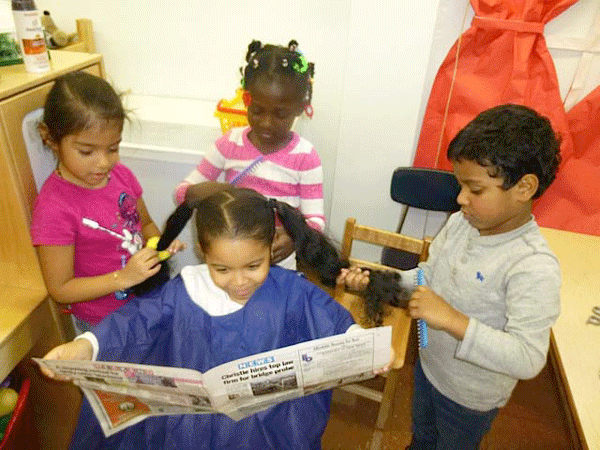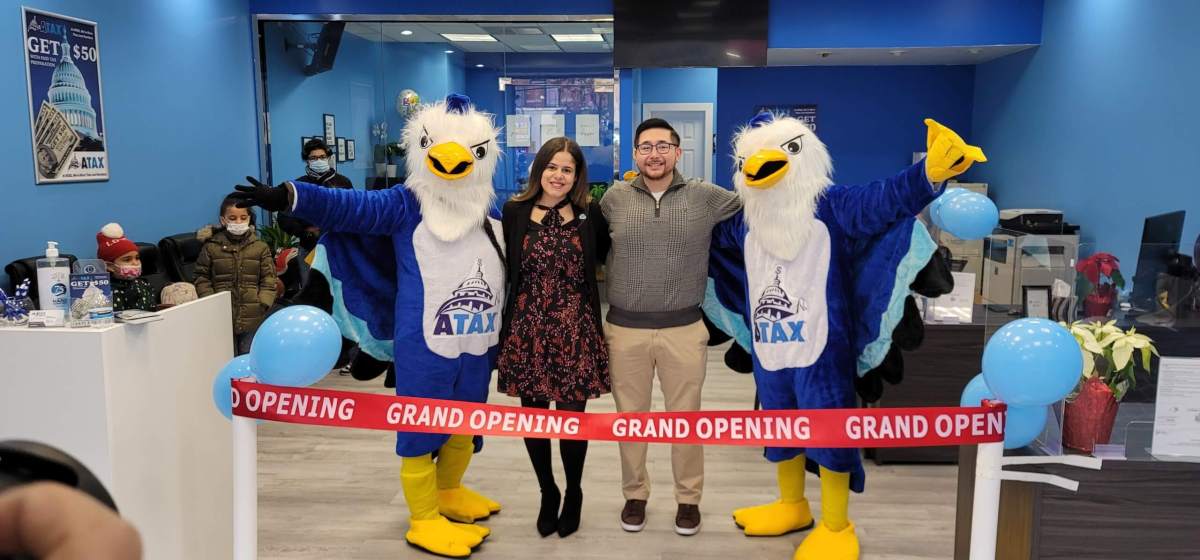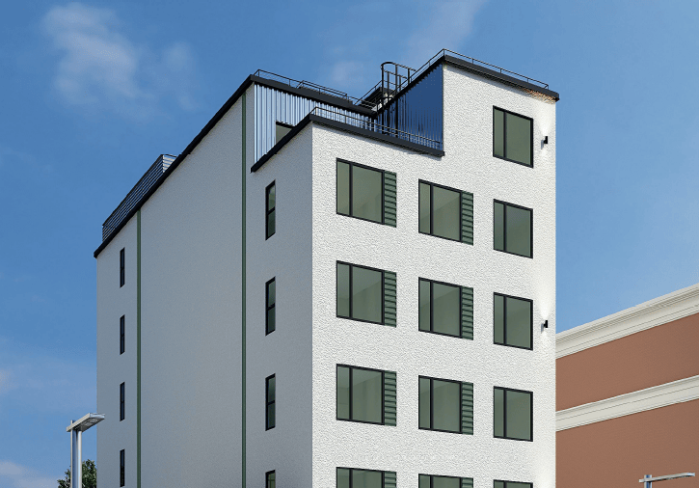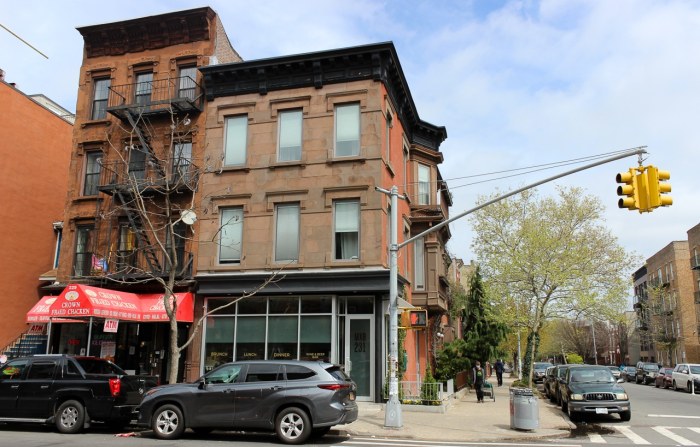
P.S. 142 students doing their “beauty salon” — the sort of interactive learning that will be further enabled by the interactive, touch-screen tables arriving later this summer. The multitasking pupils were also keeping up on their Bridgegate news.
BY ZACH WILLIAMS | A little something extra in last month’s city budget speeds up the classroom of the future’s arrival a bit for Lower East Side students.
Eight local schools received additional funding for technology purchases, including laptops and interactive whiteboards, plus tables with all the capabilities of an iPad, but bigger and inviting for more than one user at a time.
City Councilmember Margaret Chin secured the $480,000 in funding, in addition to $360,000 that will enable sidewalk and bathroom repairs at three other schools, as well as the construction of a rooftop garden at Emma Lazarus High School.
“In today’s world, education is about more than just textbooks and lectures,” Chin said in a statement. “So I made sure to provide funding for new laptops or digital technology upgrades to schools which required that boost.
“I’m particularly excited about providing funding for interactive, touch-screen technology to early-childhood, special-education students at P.S. 142,” she said. “That technology will greatly aid the school in handling its influx of special-ed students.”
Principals interviewed indicated that the new technology should be ready in time for the upcoming school year.
Long gone are the days when a computer or two in the back of a classroom sufficed for introducing children to technology, noted Rhonda Levy, principal of P.S. 142. She said that $40,000 in funding for “interactive tables” in four early-childhood special-education classrooms would be a welcome change from the rote methods of the past.
In recent years, Levy’s students have re-created activities, such as building a beauty salon.
“What they re-create in those classrooms will make you cry,” she said. “You just don’t realize what a 5-year-old can do.”
Every year, the hands-on approach at the school requires loads of new materials and books. Levy said some of her teachers now spend time applying for as many as eight educational grants per year. Meanwhile, technology can aid children with “subtle” learning disabilities to quickly integrate with their peers, she added.
Five local schools will purchase mobile “laptop carts,” allowing several classrooms to share technology. Used alongside interactive whiteboards, multitasking students can read books at the front of the classroom while also accessing a personal device brimming with educational applications, explained James Lee, principal of P.S. 20. Lee’s school received $60,000 for laptop carts.
The carts can even update software on students’ iPhones, he said.
“We’re putting a lot of our funds into either laptops or iPads in order to serve a great number of kids all at the same time,” Lee said.
He added that the funding will also better prepare P.S. 20 to comply with the expected future requirement that standardized testing be done on computers rather than with paper and pencil.
However, principals said the software that the Department of Education is offering to go with the carts unfortunately is not that great.
“The software that they offer is stupid,” one of them said, though adding, “but they did allow us to roll over the software money.”
The principals all said that their students enjoy the expanded use of technology in the classroom.
“The kids love it. Why not make use of it?” she said. “There is so much out there.”

















